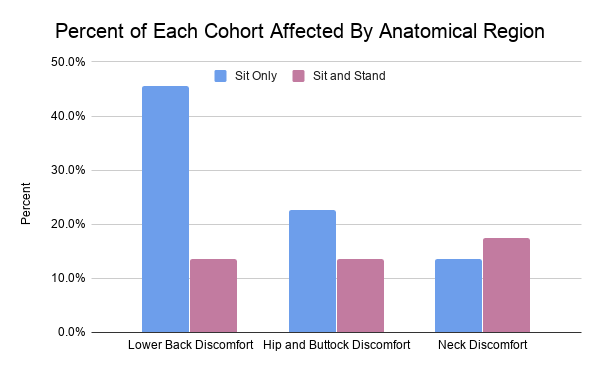 Almost everyone reading this has had or will have some form of nagging low back pain. Yes, symptomatic relief through manipulations and manual therapy may help, but you have the ultimate ability in keeping your back healthy. Investing in the integrity of your lower back through exercise, weight control, and mindfulness appears much more cost-effective than money spent on costly equipment and cures. The culprits causing neck and back remain elusive and complex, so the goal of this article is to provide an incomplete yet accessible guide towards managing pain something that you may find useful.
Almost everyone reading this has had or will have some form of nagging low back pain. Yes, symptomatic relief through manipulations and manual therapy may help, but you have the ultimate ability in keeping your back healthy. Investing in the integrity of your lower back through exercise, weight control, and mindfulness appears much more cost-effective than money spent on costly equipment and cures. The culprits causing neck and back remain elusive and complex, so the goal of this article is to provide an incomplete yet accessible guide towards managing pain something that you may find useful.
Workplace Stress Increases The Risk of Low Back Pain
Your back is a strong, and sturdy structure. Our modern vocabulary has introduced a veneer of fear in back pain with phrases such as “slipped disc”, “broken back”, and “chronic pain.” Indeed, pain can be a frightening experience but you need to understand that pain isn’t merely mechanical damage. Pain is largely influenced by your current emotional and mental state. Research has shown that anxiety and stressful thoughts can increase the risk of pain and disability. Your perception is also the reason for the placebo effect to work, now apply it to work. Practicing mindfulness and meditation are very important for disposing of emotionally-negative thoughts.
Focus On Movement, Not Posture
Arguing against the significance of posture as a culprit for back still remains a hot take in discussions about the back. Despite a good amount of scientific evidence finding no association with posture and developing LBP, the archaic theory is still circulating mainstream.
As a renowned therapist, Greg Lehman puts “Is it some ‘bad posture’ that is the problem, or is it simply that you aren’t moving? If we focus on posture we are focusing on the wrong things.”
Why does this common misconception persist? Well, this is because nuance is at play. Sedentary behavior weakens the musculoskeletal system’s ability to sustain awkward positions so if a sedentary individual forces their body with high demands their muscles, and joints will be unsustainable leading to a lower back injury. It is the body’s inability to perform for a given demand, and not the posture that leads to injury.
Organize Movement Throughout Your Day
The strongest evidence for reducing and preventing pain in office workers has been found in data around varying postures throughout the workday. This includes the use of standing-desks and miniature exercise routines. When you take active steps towards decreasing the amount of sedentary behavior and perform simple body exercises throughout the day, you can drastically decrease the amount of back pain you may experience.

Graph re-designed from data of Thorp et al. 2014 looking at the effects of comparing sit-only to sit-and-stand workstations for overweight/obese office workers. The only anatomical region to reach statistical significance (p <.03) was lower back discomfort.
Concluding Remarks
The etiology of back pain remains elusive to scientists and clinicians. Advances in imaging techniques have not been particularly helpful and in fact, imparted more noise to the clinical picture. For example, there have been numerous studies that found healthy, pain-free individuals with all sorts of structural asymmetries and abnormalities. And likewise, individuals who suffer from excruciating pain have no significant structural abnormalities. What experts agree is that being active throughout the work day and deflecting anxiety has a very important role in preventing low back pain.
Strategies for Preventing and Managing Low Back Pain
- Organize movement throughout your day. Create a routine schedule that your body can appropriately accommodate.
- Focus on movement, and not posture. Modify your posture based on symptoms, some of you may find slouching relaxing, others sitting up. As Greg Lehman says, “If it hurts, try something else.”
- Practice mindfulness as a means of coping with stress and pain in the body. Improvements in pain and symptoms may take months to achieve, your body needs time to adapt.
Disclaimer: The content on this site is provided as an information resource only, and is not to be used as a substitute for any diagnostic, treatment purpose, or professional medical advice. Using the information on this post or links is at the reader’s own risk. Readers should not ignore, or delay in obtaining medical advice for any medical condition they may have, and should seek the assistance of their health care professionals for any such conditions.
References
- Steffens, D., Maher, C. G., Pereira, L. S., Stevens, M. L., Oliveira, V. C., Chapple, M., … & Hancock, M. J. (2016). Prevention of low back pain: a systematic review and meta-analysis. JAMA internal medicine, 176(2), 199-208.
- Zhang, T. T., Liu, Z., Liu, Y. L., Zhao, J. J., Liu, D. W., & Tian, Q. B. (2018). Obesity as a risk factor for low back pain: a meta-analysis. Clinical spine surgery, 31(1), 22-27.
- Thorp, A. A., Kingwell, B. A., Owen, N., & Dunstan, D. W. (2014). Breaking up workplace sitting time with intermittent standing bouts improves fatigue and musculoskeletal discomfort in overweight/obese office workers. Occup Environ Med, 71(11), 765-771.
- Davis, K. G., & Kotowski, S. E. (2014). Postural variability: an effective way to reduce musculoskeletal discomfort in office work. Human factors, 56(7), 1249-1261.
- Gibbs, B. B., Hergenroeder, A. L., Perdomo, S. J., Kowalsky, R. J., Delitto, A., & Jakicic, J. M. (2018). Reducing sedentary behaviour to decrease chronic low back pain: the stand back randomised trial. Occupational and environmental medicine, 75(5), 321-327.
